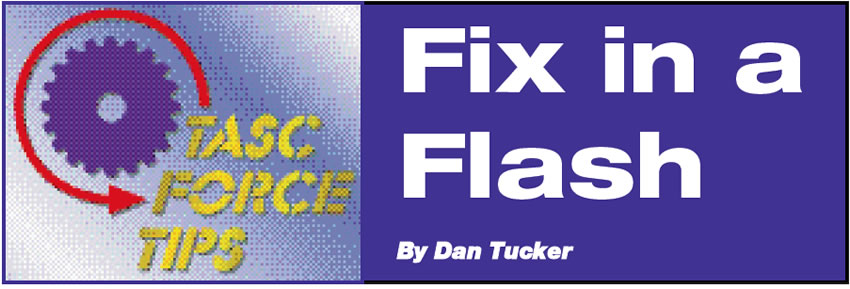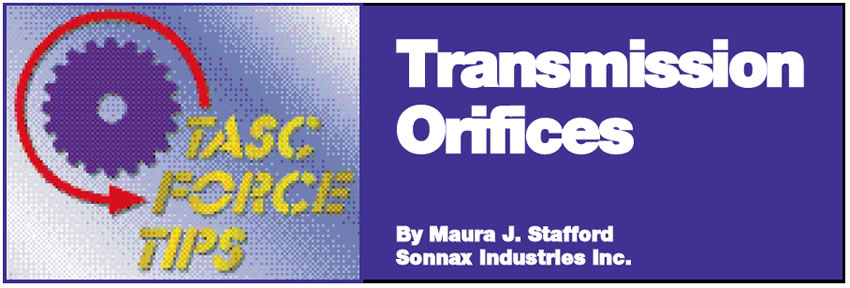Coolers and Contaminants
Most of us have been battling cooler and contamination issues for years. We may not realize it, nor care to look for it, but it does manage to rear its ugly head.
First we need to look at the sources. Mike Steen (technical director at Certified Transmission) has spent considerable time on finding these sources. Along the way, I have found a few as well. Hung valves and stuck governors have plagued us for years. We thought the contaminants came from coolers. We bought flushers and flushed coolers, and the problem went away – well, not quite. We still have problems.

Close Counts Only in Horseshoes and Hand Grenades
Watch out when swapping stator shafts from one pump cover to another on 700-R4/4L60-E transmissions. We have all been there before. You have a unit with a good pump cover and a damaged stator shaft, and in your pile of parts there is a good stator shaft in a damaged pump cover. All you need to do is press the good stator shaft into the good pump cover and you will have what you need to get this car down the road today. Sounds simple, but how often are things that simple in this business?

Troubleshooting One-Way Clutches
There was a time when the only fact that you had to know about a one-way clutch was the direction in which the clutch freewheeled. Today you also must be able to troubleshoot some difficult problems related to one-way clutches.

4L80 E Converter-Clutch Failure in 2000 & Up Vehicles
If you were involved in the transmission industry when the E4OD transmissions began coming to local shops, you probably experienced the nightmare of cracked converter clutches. The primitive code-retrieval methods on the early transmissions were usually little help in finding the root cause of the problem. The aftermarket converter rebuilders recognized the cracks in the converter clutches early on. Some made vain attempts at welding the cracked converter clutches, while most others recommended a factory replacement converter.

Fix in a Flash
Occasionally, we find the problem to lie outside the transmission/transaxle, in such parts as the MLPS (manual-lever position sensor), TPS (throttle-position sensor) or MAP (manifold-air-pressure) sensor, to name a few. Though it’s rare, even the computers/modules (such as the vehicle control module (VCM), transmission control module (TCM), powertrain control module (PCM) or engine control module (ECM)) fail from time to time. We have become accustomed to troubleshooting these systems, and although they are becoming somewhat routine, we all know that we run into some problems that “push” you. They either push you into being a better technician or push you closer to finding a different occupation.

4L60-E: 4×4 Low Range Only After Overhaul
Once you are aware that the wire harnesses can be connected incorrectly, it is easy to look back at the problem. When the transfer-case motor-encoder plug is connected to the oxygen sensor, it will short, blowing the fuse; and when the oxygen-sensor plug is connected to the motor-encoder, it shifts the transfer case to 4×4 low range..

E4OD/4R100 Safety Alert
The concern addressed in the bulletin is that the wiring from the overdrive switch may not be routed properly and may come into contact with a steering-column-cover mounting screw and cause a short. This short will blow the #17 fuse.

Necessary Tools
One of the responsibilities of a reputable transmission shop is to prevent problems before they occur. Checking the quality of the parts that are going into the transmission is one way to achieve this. Checking the hardness of the metal parts is an important part of this process.

Transmission Orifices
It may seem obvious initially, but when you’re talking about transmission orifices, size does matter. What may be surprising, though, is how significant a difference in vehicle performance small changes in orifice diameters can make. This becomes important when you’re considering modifications to separator-plate holes (see Figure 1) or cup-plug orifices (see Figure 2) during a rebuild.

Load-Testing Solenoid Circuits
The last thing I want to do is put you to sleep with an article on performing electrical tests and Ohm’s Law. What I want to show here is something that I think is really exciting: load-testing solenoid circuits with an ammeter! Using an ammeter and a calculator can save time, LOTS OF TIME. How would you like to check the power distribution, ignition switch, external and internal wiring, solenoids, computer and computer grounds without putting the vehicle on a lift or even raising the hood?

Code 47/633 in E4OD/4R100
Many technicians are familiar with the problem of early shift scheduling on the 4L80-E transmission. This prob¬lem is caused by a 4×4 low range signal being sent to the computer at an inappropriate time. Vehicles equipped with the E4OD/4R100 transmission may also have this type of problem. A code 47/633 is usually your first clue in identifying this condition. Since Ford uses the same wiring harness in both 4-wheel drive and 2-wheel drive vehicles, you may find code 47/633 in both types of vehicles.

Part II – More 4L30 E Problems (Lots More)
Problems and Fixes for the 4L30 E transmission.

